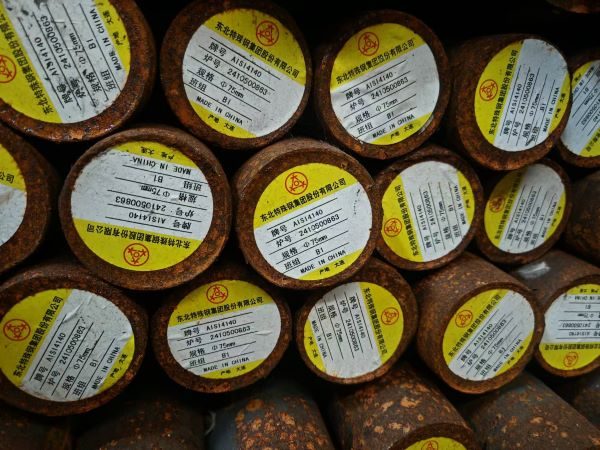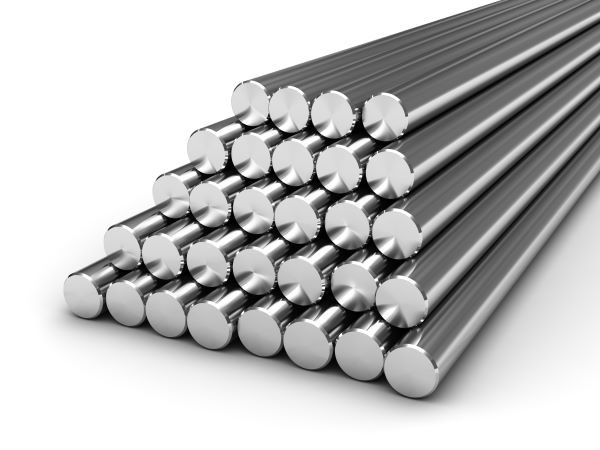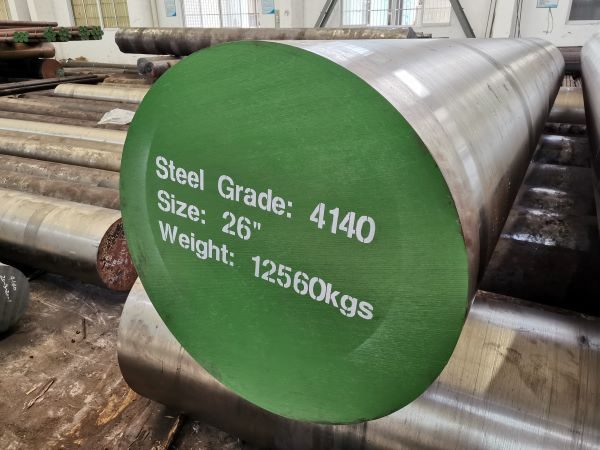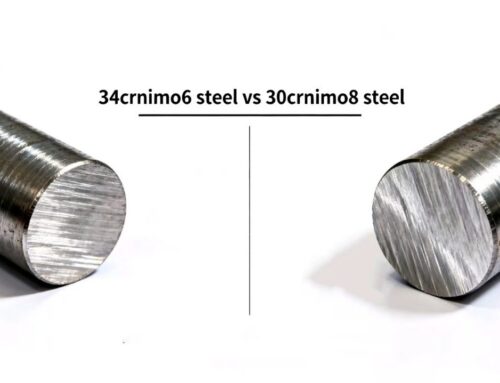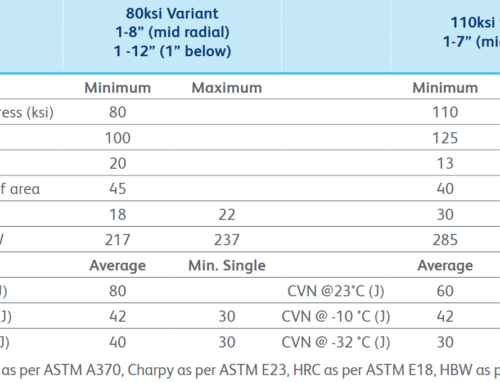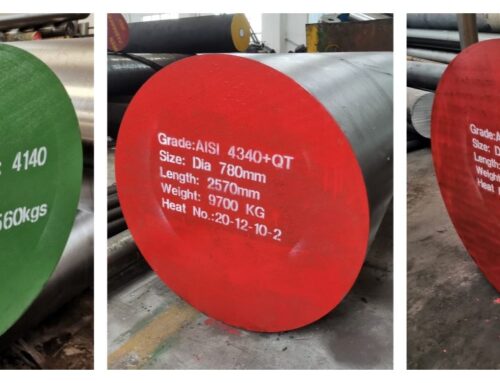In the field of high-strength alloy structural steels for industrial manufacturing, 4140 and 4142 steels are like twin brothers. Both belong to the Cr-Mo alloy structural steel family, and their excellent hardenability and toughness make them a popular choice for mechanical parts, molds, and shafts.
However, they are not completely identical—a subtle difference in carbon content of 0.02%, like a millimeter’s difference, creates clear distinctions in hardness, wear resistance, and processability, ultimately determining their respective applications in different working conditions. To accurately determine which steel is best suited to your needs, we must first analyze their core differences.
1. Chemical Composition (Key Difference)
| Element | AISI 4140 | AISI 4142 | Differences |
| Carbon (C) | 0.38 - 0.43% | 0.40 - 0.45% | This is the key difference! 4142 has a slightly higher carbon content. (approximately 0.02-0.03%). |
| Manganese (Mn) | 0.75 - 1.00% | 0.75 - 1.00% | Same |
| Phosphorus (P) | ≤ 0.035% | ≤ 0.035% | Same |
| Sulfur (S) | ≤ 0.040% | ≤ 0.040% | Same |
| Silicon (Si) | 0.15 - 0.35% | 0.15 - 0.35% | Same |
| Chromium (Cr) | 0.80 - 1.10% | 0.80 - 1.10% | Same |
| Molybdenum (Mo) | 0.15 - 0.25% | 0.15 - 0.25% | Same |
Summary: 4142 is essentially 4140 with slightly higher carbon content. All other alloying elements are identical.
2. Mechanical Properties (After Heat Treatment – Quenched and Tempered Condition)
Due to its higher carbon content, 4142 typically achieves:
- Higher Hardness: Under identical heat treatment conditions (especially tempering temperature), 4142 can achieve higher hardness than 4140.
- Higher Strength: Higher hardness generally translates to higher tensile and yield strengths.
- Slightly Lower Toughness/Ductility: This is the trade-off for higher carbon content and strength. 4142’s impact toughness (e.g., Charpy V-notch impact energy) and reduction of area/elongation are typically slightly lower than those of 4140 of the same hardness grade.
- Higher Wear Resistance: Higher hardness generally results in better wear resistance.
| Performance | AISI 4140 (Typical Range) | AISI 4142 (Typical Range) | Difference |
| Tensile Strength | 655 - 1020 MPa (95 - 148 ksi) | 795 - 1080 MPa (115 - 157 ksi) | 4142 typically achieves higher strength levels |
| Yield Strength | 415 - 855 MPa (60 - 124 ksi) | 515 - 930 MPa (75 - 135 ksi) | 4142 typically achieves higher yield strength |
| Elongation | 15% - 25% | 12% - 20% | 4142 typically has slightly lower ductility |
| Reduction of Area | 40% - 60% | 35% - 55% | 4142 typically has slightly lower reduction of area. |
| Hardness (HRC) | 20-55 HRC | 25 - 58 HRC | 4142 can achieve a higher upper hardness limit. |
| Impact Toughness | Higher | Slightly Lower | 4142 has slightly lower toughness (especially at low temperatures). |
3. Heat Treatment
- Similar Processes: Both achieve optimal combined properties (strength, toughness, and hardness) through quenching and tempering. Oil is typically used as the quenching medium.
- Hardenability: Due to their very similar alloy compositions (the primary difference being carbon, which has a relatively smaller impact on hardenability than chromium-molybdenum), the hardenability of both is very similar, with 4142 potentially having a slightly higher hardenability (the higher carbon content slightly increases hardenability). Both have good hardenability and are suitable for parts with medium cross-sections.
- Tempering: The tempering temperature is a key parameter in regulating final hardness and strength. 4142 maintains higher hardness/strength than 4140 at the same tempering temperature.
- Cracking Susceptibility: Due to its higher carbon content, 4142 may be more susceptible to cracking during quenching, especially in complex shapes or with sudden changes in cross-section. Careful attention should be paid to preheating, quenching medium selection, and cooling control.
4. Machinability
- Machinability in the Annealed Condition: In the annealed state, both are relatively easy to machine, such as turning and milling. 4142 may have a slightly higher hardness than annealed 4140, resulting in slightly faster tool wear, but the difference is generally insignificant.
- Machining in Heat-Treated Conditions: After heat treatment (quenching and tempering), higher hardness makes machining more difficult. Because 4142 can achieve higher hardness, its machinability at higher hardness is inferior to that of 4140 of the same hardness or 4142 itself at lower hardness.
5. Weldability
- Fair Weldability: As medium-carbon, low-alloy steels, neither 4140 nor 4142 has excellent weldability. There is a higher risk of cold cracking (hydrogen-induced cracking) during welding.
- 4142 Slightly Higher Risk: Due to its higher carbon content, 4142 has slightly worse weldability than 4140 and is more susceptible to cracking.
6. Main Applications
AISI 4140 (More Balanced):
- Shafts (drive shafts, gear shafts, camshafts)
- Gears (requiring good toughness and fatigue strength)
- Connecting rods
- Bolts and fasteners (high strength)
- Mold inserts and mold bases (not subject to extreme wear)
- Oil and gas industry parts (valves, drill collar accessories)
- General engineering components requiring a good balance of strength and toughness.
AISI 4142 (Higher Strength/Hardness):
- Parts requiring higher surface hardness and wear resistance (such as pins, bushings, sprockets, track shoes).
- Higher-strength shafts and gears (where higher wear resistance is required and shock loads are not excessive).
- High-strength bolts and fasteners (requiring higher ultimate strength).
- Tool holders and spindles.
- Components subject to high stresses but low shock loads.
Summary and Selection Recommendations
Essential Differences: 4142 is a slightly higher carbon content (0.40-0.45%) than 4140 (0.38-0.43%).
Performance Differences:
- 4142: Under the same heat treatment conditions, it achieves higher hardness, strength, and wear resistance, but exhibits slightly lower toughness, ductility, and weldability, and is slightly more susceptible to cracking during quenching.
- 4140: Offers improved toughness, ductility, and impact resistance (especially at low temperatures or under impact loads), with slightly better weldability and a relatively lower risk of quench cracking (compared to 4142), and a slightly lower upper limit for strength and hardness.
How to Choose?
- Prioritizing toughness/impact resistance/weldability? -> Choose 4140. It is the most versatile and widely used medium-carbon chromium-molybdenum steel.
- Prioritizing ultimate strength/surface hardness/wear resistance, with less stringent toughness requirements and minimal or tightly controlled welding requirements? -> Choose 4142. It excels where higher hardness and wear resistance are required.
- Specific Specifications: The final choice often depends on the grade specified in the design drawings or industry standards. If the standard specifies strength or hardness requirements, 4142 may be more easily achievable with the higher values.
- Consider Cost and Availability: 4140 is generally more common, more readily available, and may cost slightly less (though the difference is not significant). 4142 is also commonly used.
Memorize: Think of 4142 as a “high-carbon reinforced version” of 4140. It offers advantages in strength and hardness, but at the expense of toughness and processability (welding and hardening). 4140 offers a more balanced option.

